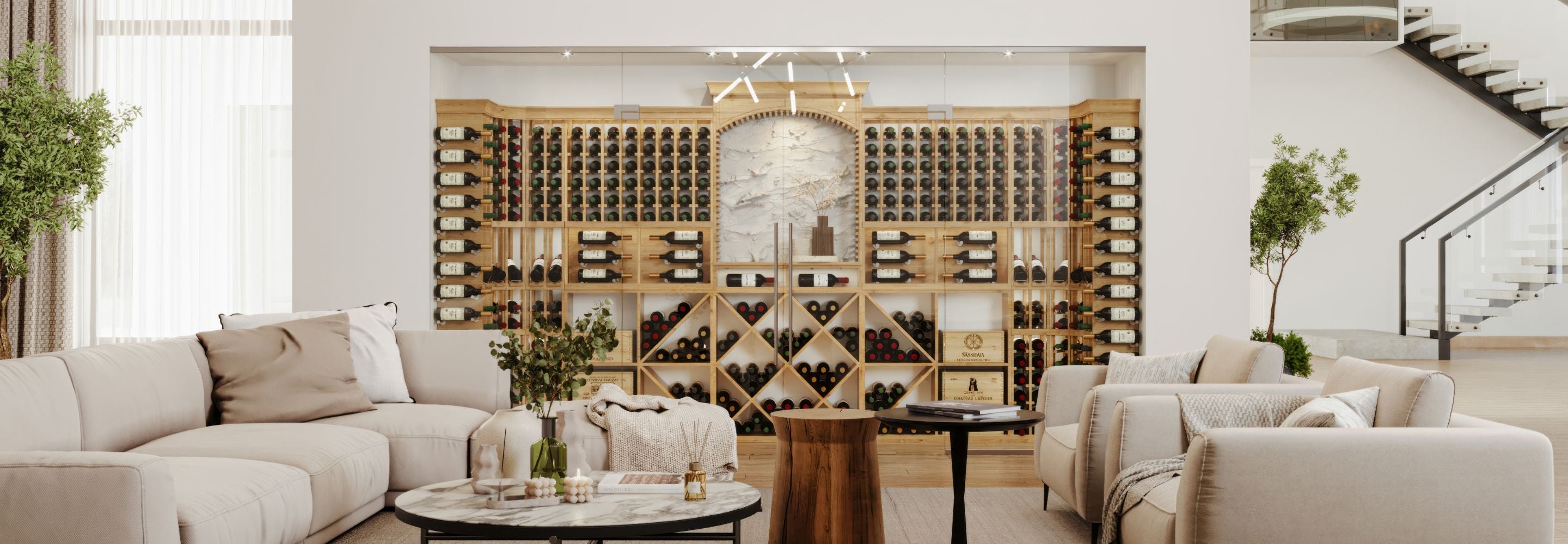DOES A WINE CELLAR INCREASE HOME VALUE?
It’s a question we get all the time: “Will a wine cellar increase the value of my home?” The quick answer is yes. But there is a caveat, which we will explore below. With more people getting into collecting, storing and, of course, drinking wine, it makes sense that wine cellars and wine rooms in homes are becoming more popular. Let’s take a look at how and why you might want to add a wine cellar to raise your home’s value.
DO IT RIGHT
According to a 2019 article from MarketWatch.com, wine rooms in homes rank No. 3 in improvements you can add that will raise a home’s value. Statistics show that a dedicated place to store and display your wine collection can increase your home’s value by up to 31%, obviously a significant figure. But to really reap that added value, you need to make sure you do things right. You’re not going to raise the value of anything if you simply stack some bottles of merlot on a shelf in your living room closet and call it a “wine room.”
BE COOL
Temperature is very important when designing and constructing wine cellars in homes. Your dedicated wine cellar should maintain a constant 55 degrees Fahrenheit along with humidity in the neighborhood of 70%. If you have a home with a basement that supports that consistent cooling levels, you’re lucky. But chances are you’re going to need a cooling system to maintain ideal conditions for your wine.
Temperature that is too warm will upset the chemistry of wine as it ages and ruin the subtle variations of flavors and aromas.
MOISTURE IS NOT YOUR FRIEND
Along with the proper temperature, wine rooms in homes need a proper vapor barrier. Good insulation will help your wine cellar maintain its ideal temperature, and a vapor barrier will keep the humidity at the correct level. Together they manage to sustain your wine cellar’s perfect climate.
Without a proper vapor barrier, even if your wine cellar is nice and cool, the surrounding structure of your warm home will cause condensation. Any amount of condensation can lead to mold issues in and around your walls and insulation. Over time, condensation can weaken the structural integrity of your walls and allow heat into your wine cellar. This means your cooling system will have to work harder to maintain the proper temperature.
GET A GOOD DOOR
The door to your wine cellar is arguably the most important piece, especially if we’re talking about the value your wine room adds to your house. This is the gateway to your wine cellar. It’s the first thing people see when you invite them inside. An attractive door can make a fantastic (or less than stellar) first impression, so choose wisely.
Of course there’s more to a great wine cellar door than attractive aesthetics. Wine cellars in homes need airtight doors. Don’t skimp on a quality door and frame with a perfect seal.
DON’T DISCOUNT THE “WOW FACTOR”
One of the reasons a wine cellar raises your home’s value is simply because it can draw the attention of potential buyers. Similar to a great swimming pool or dedicated home theater setup, wine rooms in homes just stand out and make people take notice. Even people who wouldn’t necessarily be looking for their own in-home wine cellar can’t help but appreciate such a luxurious feature. Often, they start to think about how great it would be if they DID have their own wine cellar. Suddenly, homes without one just don’t measure up.
FORM AND FUNCTION
Wine cellars in homes have many purposes. A small climate-controlled closet with a wine rack is one thing, but a fully decorated area with seating takes the wine room idea to another level. Likewise, a walk-in cellar with creative and attractive racks of wine bottles adds to the aesthetic appeal and thus the home’s overall value. So, when you’re deciding to put a wine cellar in your home, think about whether you simply want a place to store your wine — or a space to showcase your collection and serve as a room in which to entertain guests.







